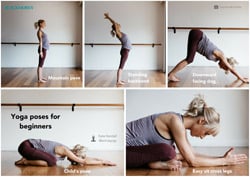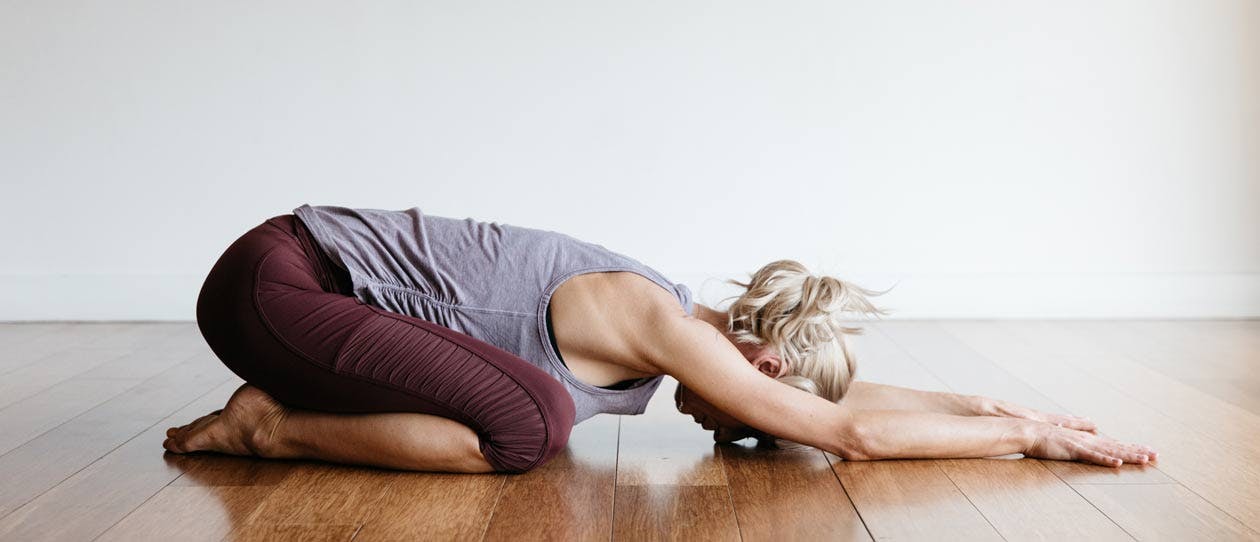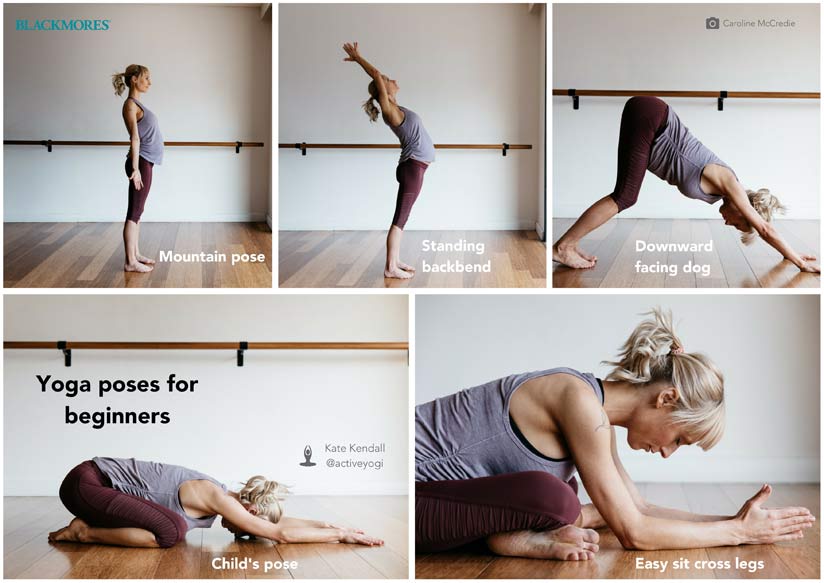Yoga is well known for its relaxation, flexibility and strength benefits.
Yoga poses, or asanas, range from beginner to advanced, seated to standing and bends and twists.
Here is the perfect sequence of 5 essential yoga positions to give you a great foundation for your yoga practice. It’s a great sequence for home or anywhere you feel relaxed.
See larger image

Introduction for the yoga curious
We were all a beginner at some point in whatever it is we do and love, right?
Yoga is a practice like anything else and requires patience, curiosity and a willingness to explore the body in a sustainable yet courageous way.
I absolutely love it when I have beginners in class because they bring this curiosity (and often apprehension) that can get lost somewhere along their yoga journey.
So to all our beginner yogis…we welcome you. Your curiosity and willingness to learn is refreshing. Never a hassle.
The following sequence is my go-to for you and designed to practice at home, whilst listening closely to the body as you do so, and building the confidence to get along to a class if you have access to one.
5 essential yoga poses for beginners
This yoga sequence for beginners involves flowing through 5 asanas, or yoga poses. We’ll talk you through each of these in a minute, but here they are in a nutshell:
- Mountain pose (Tadasana) - The foundation posture for all standing postures
- Standing backbend – An energising pose to open the hip flexors, get the heart pumping and improve spinal health
- Downward facing dog (Adho Mukha Svanasana) – This position lengthens the back, hamstrings and calves and opens the chest and shoulders
- Child’s pose (Balasana) – A restorative posture that allows the yogi to relax whilst stretching the inner thighs, quads, back and chest
- Easy sit cross legs – A great pose for cultivating mobility in the hips and lower back as well as giving you a quiet moment to yourself
Yoga pose sequence for beginners
1. Mountain pose - tadasana
Great for: This is the foundation posture for all standing postures and can inspire integrity in form for postures across the board. Tadasana, or mountain pose, is the perfect way to check in with how you’re holding yourself.
Does the posture feel slumped and rounded? Or do you tend to stick out your backside and flare the ribs? Can you find somewhere in between? This simple shape does wonders for improving posture.
How to:
- Stand at the top of your mat with feet hip distance apart (there are variations with feet together but for a little more stability to start let’s go feet apart).
- >Close your eyes so that you can tune into the sensations in your body that arise as you form this posture.
- Press down firmly into all four corners of the feet and energise the thighs slightly so that the knee caps lift a little.
- Ease the tail bone down the earth of backs of heels to lengthen the spine so that there is an energetic ‘downward movement’
- And then opposing this downward motion, allow for an energetic lift from base of spine to crown as you lengthen the back and sides of neck with chin tucked ever so slightly in.
- Gently magnetise the shoulder blades towards each other so that the chest and collar bones broaden and then palms face forward
- Standing here, notice your breath and the way the posture feels




